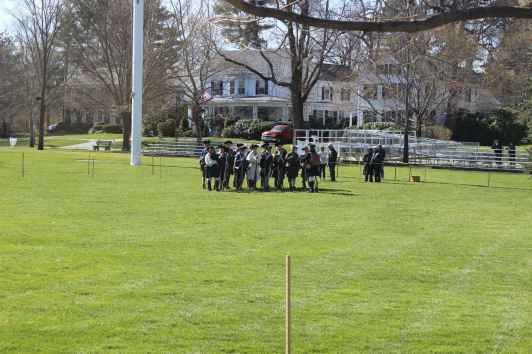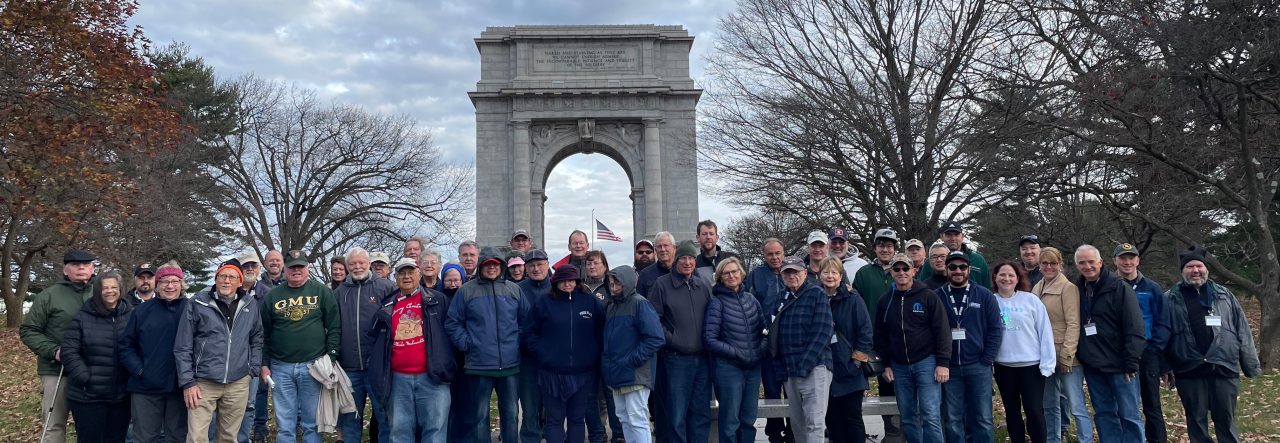
We all have bucket list items that we want to check off in our lifetime. Some revolve around traveling, some may revolve around learning a new hobby or skill. We may have different categories of items. The last is true for me.
One of those categories was to see the first shots of the wars of the United States (okay and the French and Indian War, since that started the march toward independence, when looked at through the lens of history and distance).
When writing the book with fellow Emerging Revolutionary War historian Rob Orrison, on the battles of Lexington and Concord, we both walked around Lexington Green, getting the perspectives of both the militia gathered there that morning and the marching British soldiery making their way to Concord. Arriving in the early morning to get the general feel, we stood in the footsteps of the first shots of what would become the American Revolution.

This past November, a group of Emerging Revolutionary War historians made the trek to South Carolina to do recon and research for upcoming volumes in the Emerging Revolutionary War Series (yes, that is a cliffhanger to keep you guessing on volumes coming in future years). Taking a quick break from the American Revolutionary history that abounds in Palmetto State, the group made a detour to where Fort Johnson once stood around Charleston Harbor.
On the grounds stands a stone marker, commemorating “The First Shot” of the American Civil War or as some refer to the conflict, “The Second American Revolution.” As the marker reads, in part:
“At half past four on the morning of April 12, 1861, from a mortar near this
spot on Fort Johnson, the first shot of the War of Secession was fired…”
Taking a quick walk down to the water’s edge, I had a few minutes to reflect on what events had taken place, starting at that early morning hour, from that spot. Four years and over 750,000 casualties later, the last shots of the war erupted. No one garrisoning that fort on that spring day in 1861 could have ever imagined the carnage and destruction that pulling that mortar lanyard would usher in. The gravity and enormity of where I was made me realize how important telling, learning, and sharing these stories of American history are.

I can now check off my history travel bucket list the “first shots” entries. But, what stayed with me long after those visits were over is the feelings those places evoked. I think that is why those with a passion for American history continue to read, study, write, and discuss these momentous events.
What is on your history travel bucket list?
*P.S. – As a disclaimer, I have also traveled to Jumonville Glen and Fort Necessity, sites attributed to the first shots of the French and Indian War. That’s a post for another day though!



History bucket lists are a worthy (and cool) pursuit. Waterloo is on my bucket list and I’m happy to say I will be there this June for a week.
LikeLiked by 1 person
Nice article. Visiting Jumonville Glen was a nice touch. I myself am a certified tour guide of colonial history in Philadelphia and a life-long student of our nation’s founding. There’s a book called Forbe’s Road, which travels present day route 30 and others as it was blazed by Brigadier General John Forbes to reach the forts from Philadelphia to western PA. My bucket list was to travel to all the forts, Braddock’s Grave, Bedford, Necessity, Jumpnville, etc. many other sites along the way. Great book. Forbes is buried in the altar of Christ Church, Philadelphia where I lead my tour groups to visit. Probably the most historic structure in Philly outside of the State House (Independence Hall). My new bucket list is to visit the graves of all the signers of the Declaration and the Constitution, of which I have done many from Georgia and South Carolina last year, up to those in Boston and of course Philadelphia that I pass almost every day in season. Fort Sumter was cool, but you have to tie in Fort moultrie with it from Revolution to Revolution! I was a little sad to miss the grave of Thomas Heyward Jr., since he was the only signer lost at sea but visiting the battery where he and Middleton and Rutledge and the others were held prisoner in Charleston was pretty cool. Love your posts look forward to more !
LikeLike
Actually Thomas Hayward is buried along a country road in SC not that far from Charleston and is accessible to the public… Thomas Lynch was lost at sea.. and his home is open to the public just outside of Georgetown SC
LikeLike
Visiting all the graves of the Signers of the Declaration of Independence.. it’s quite the challenge.
LikeLike
Heyward.. sorry… typo
LikeLike